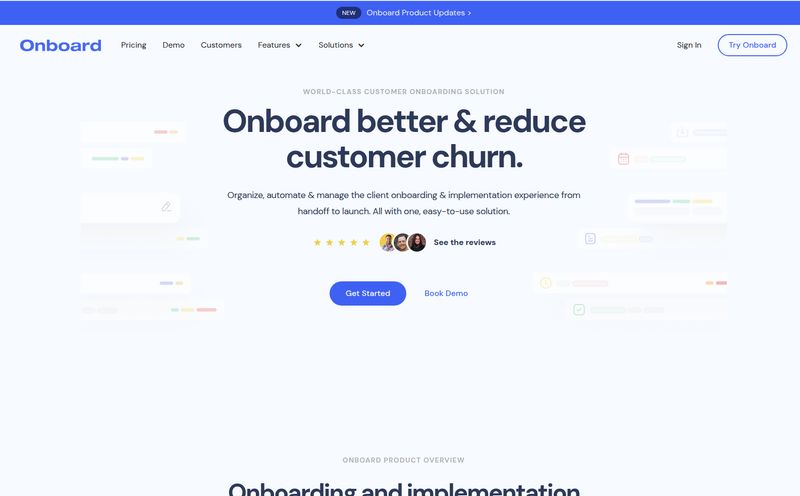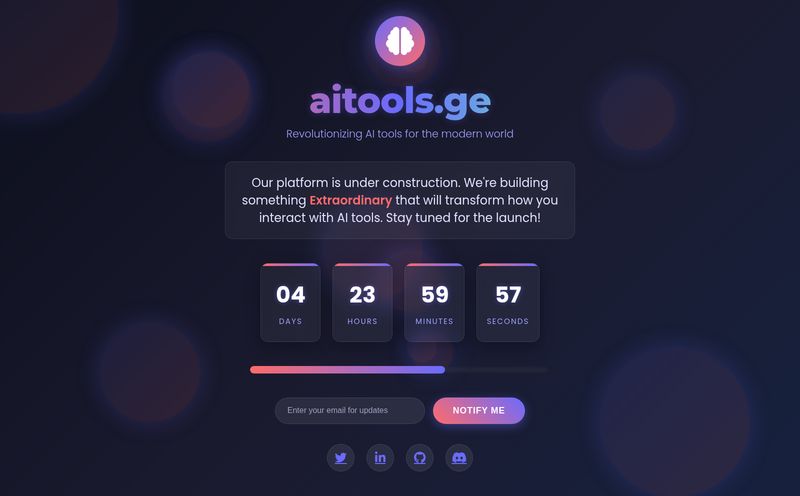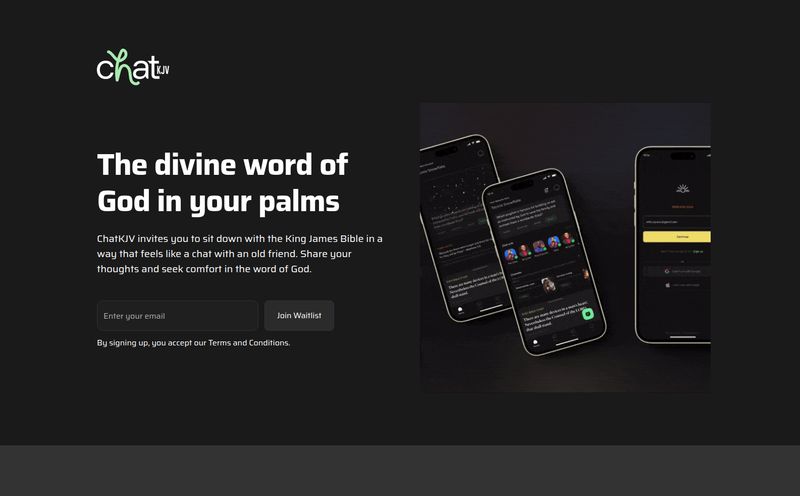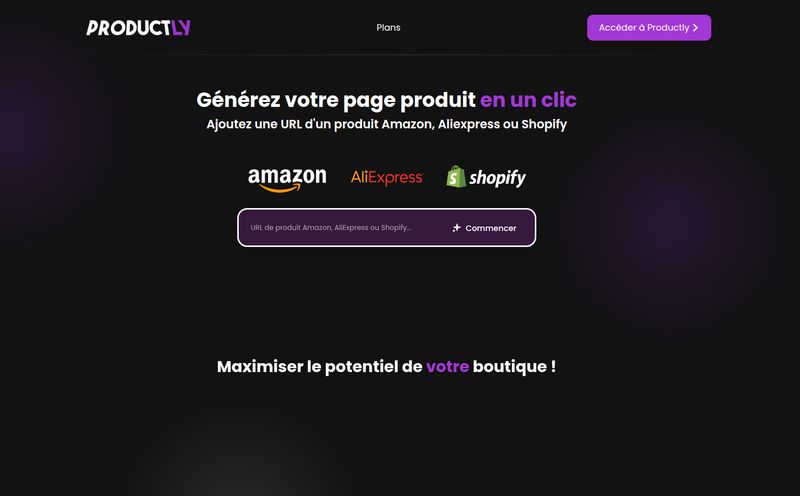Running an e-commerce store is a grind. You're the marketer, the product photographer, the fulfillment specialist, and, of course, the 24/7 customer support team. I’ve been in the SEO and traffic game for years, and I’ve seen countless passionate store owners burn out trying to answer the same three questions at 2 AM. “Where’s my order?” “Do you ship to Antarctica?” “Is this available in blue?”
We’ve all heard the promises of AI chatbots, right? For a long time, they were… well, a bit rubbish. Clunky, robotic, and more frustrating than helpful. They felt like those annoying automated phone menus, but for your website. But the tech has taken a massive leap forward. Recently, I’ve been looking into tools that genuinely move the needle, and one name that kept popping up is ZipChat AI. It claims to be an AI agent that sells and supports, not just a dumb bot. So, is it just another overhyped gadget, or is it the real deal? I had to find out.
What Exactly is ZipChat AI? (And Why Should You Care?)
At its core, ZipChat AI is an AI-powered chatbot built specifically for e-commerce businesses. But that description is a bit like calling a smartphone a “pocket calculator.” It really misses the point. This isn’t just a pop-up that spits out pre-programmed answers. It’s designed to integrate with your store’s knowledge base—your product info, shipping policies, FAQs—to provide instant, accurate answers around the clock.
But here’s the kicker: it’s also built to sell. It can proactively engage visitors, guide them to products, handle objections, and even help recover abandoned carts. Think of it less like a passive FAQ page and more like a tireless, multilingual sales assistant who’s had way too much coffee and is freakishly good at their job. For anyone trying to scale an online store, that should make your ears perk up.
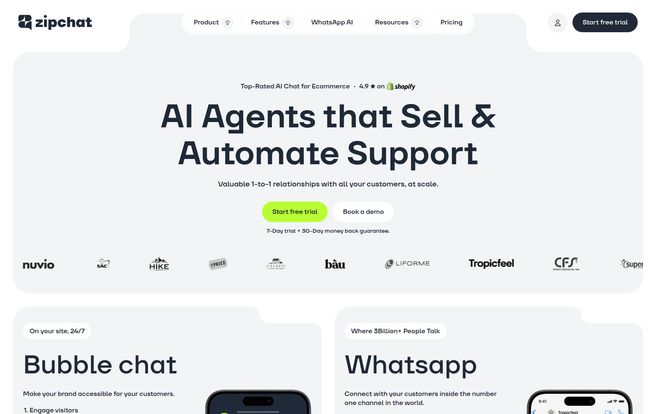
Visit Zipchat AI
The Features That Actually Matter for Store Owners
A feature list is just a list. What matters is what it does for you, the person drowning in open tabs and Shopify notifications. I’ve waded through the marketing fluff to focus on the bits that I think are genuine game-changers.
More Than Just a Chat Bubble: Proactive Engagement
Old-school chatbots just sit there, waiting. ZipChat can be configured to make the first move. The website talks about setting up “flows,” like reaching out to a customer who has been lingering on a product page for a minute. It can pop up and say, “Hey, I see you’re looking at the M-60 hiking boots. Did you know they’re fully waterproof? Let me know if you have any questions about sizing!” One of their examples even cheekily suggests following up an hour after they stop responding. A little aggressive for some brands, maybe, but you control the personality. It’s the digital equivalent of a helpful shopkeeper asking “Can I help you find anything?” instead of just staring blankly from behind the counter.
Speaking Your Customer's Language (Literally)
This one is huge. ZipChat supports over 95 languages. I once had a client with a fantastic product who was getting tons of traffic from Germany and France but their conversion rate was abysmal. Why? Because the entire support experience was English-only. Shoppers couldn't ask basic pre-purchase questions in their own language, so they just left. Being able to offer instant, native-language support isn't just a “nice-to-have”; it's a direct path to opening up new markets and building trust. This feature alone could pay for the subscription cost.
The No-Code Promise: Is It Really That Easy?
I’m always skeptical of the “no-code” label. It often means “no code until you need to do that one specific thing you actually want to do.” But ZipChat’s three-step process—Train it, Test it, Activate it—seems refreshingly straightforward. You feed it your website data, FAQs, and any other knowledge docs. You then test it internally to make sure it’s not giving silly answers. Then you switch it on. The real work, and I can’t stress this enough, is in the 'Train it' phase. The AI is only as smart as the information you provide. If your knowledge base is a mess, your chatbot will be a very confident idiot. Garbage in, garbage out, as they say.
WhatsApp Integration: Tapping into a Goldmine
Email marketing is great, but open rates can be… humbling. WhatsApp, on the other hand, is a direct line to your customer's pocket. The open rates are insane. Using ZipChat to handle WhatsApp conversations for support, order updates, and even marketing promotions is incredibly powerful. It feels personal and immediate in a way that email just can’t replicate anymore. For brands targeting younger demographics, this isn't just an option; it's becoming a necessity.
The Real-World Impact: Can It Actually Increase Sales?
Alright, let's get to the juicy stuff. Does it work? According to ZipChat’s own stats, it can solve up to 91% of support tickets and boasts a 10-24% chat-to-sale ratio. Those are some bold numbers. And while we should always take a company’s own marketing with a grain of salt, the case studies they feature are compelling. A K-beauty brand called Korendy apparently generated over $253,000 in orders from the AI chatbot. Burger Bodega, an online food store, saw over $1 million in sales supported by it.
Even if you only achieve a fraction of that, the ROI is pretty clear. If a $129/month plan can prevent even a handful of abandoned carts or convert a few extra hesitant shoppers each month, it pays for itself. It’s about turning website visitors who are “just looking” into actual customers by removing friction and answering their questions right now, not two days later in an email.
Let's Talk Money: The ZipChat AI Pricing Breakdown
So, what's this going to cost? The pricing is tiered based on the number of replies the bot handles per month, which feels fair. It scales with your business. All plans include a 7-day free trial, so you can see if it works for you before committing.
| Plan | Price per Month | Replies per Month | My Take |
|---|---|---|---|
| Starter | $49 | 500 | Perfect for new stores or low-traffic sites testing the waters. |
| Growth | $129 | 1,500 | The sweet spot for most growing businesses with moderate traffic. |
| Pro | $249 | 3,000 | For established stores where support volume is a real challenge. |
| Scale | $499 | 6,000 | For the big players who need a high-volume, automated solution. |
My opinion? Don’t just look at the price. Look at the value. How much is your time worth? How many sales are you losing because of slow response times? For many, this isn’t an expense; it’s an investment in efficiency and growth.
The Other Side of the Coin: Potential Downsides
No tool is perfect, and it’s my job to give you the full picture. Blindly praising something helps no one.
First, it's still an AI. The claim that it talks “like a human” is impressive, but it's not a person. For truly complex, sensitive, or unusual customer issues, you will still need a human to step in. That 91% solved rate is great, but you need a plan for the other 9%. This isn’t a “set it and forget it forever” tool. You need to monitor it.
Second, as I mentioned before, its effectiveness is completely dependent on the quality of your knowledge base. If your product descriptions are vague and your shipping policy is a single confusing sentence, ZipChat can't work miracles. You have to do teh homework first.
Finally, the price can be a factor for a brand new store on a shoestring budget. While the ROI is there, you need to have the traffic to justify the cost. For a store getting ten visitors a day, it might be overkill at first.
My Final Verdict as an SEO and Traffic Guy
So, what’s the final word? From my perspective, a tool like ZipChat AI is becoming less of a luxury and more of a core part of the modern e-commerce stack. It’s a direct response to a major shift in consumer behavior. People want answers now, not tomorrow.
From an SEO and user experience standpoint, the benefits are clear. A better, faster on-site experience can improve user signals that Google pays attention to—things like time on site and conversions. Happy users who get their questions answered are more likely to buy, more likely to return, and more likely to leave good reviews. This is the holy trinity of e-commerce success.
Is ZipChat AI the right tool for everyone? No. If you're just starting out, you might want to handle support manually for a bit. But if you’re an established store feeling the pain of scaling your customer support and want to proactively increase your conversion rate, then yes. I think it’s absolutely worth a serious look. The trend of “conversational commerce” is only getting bigger, and this is a powerful way to get in on the ground floor.
Frequently Asked Questions about ZipChat AI
How long does it take to set up ZipChat?
The setup is designed to be very fast. The main variable is how organized your store's information (FAQs, policies, etc.) is. Once you feed it the data, you can test and activate it quickly, often within the same day.
Does it work on any website or CMS?
Yes, according to their site, it's built to work with any site or Content Management System, including popular platforms like Shopify, WooCommerce, BigCommerce, and more.
What languages can the chatbot speak?
It supports over 95 languages, allowing you to provide native-language support to a global customer base.
Can I try it before I buy?
Yes, all of their plans come with a 7-day free trial so you can test its capabilities and see if it's a good fit for your business without any financial commitment.
Is it really as good as a human?
It's incredibly advanced and can handle the vast majority of common questions and sales scenarios conversationally. However, for highly complex or emotionally charged situations, it's best to have a human agent ready to intervene. Think of it as your best employee's very capable assistant.
The Future is Conversational
Wrapping this up, tools like ZipChat AI represent a significant shift in how online business is done. The days of static websites and slow email support are numbered. Customers expect a dynamic, interactive, and instant experience. Investing in a smart AI assistant isn't just about saving time on support tickets; it's about meeting your customers where they are and actively guiding them from casual browser to loyal fan. If you're ready to make that leap, grabbing their free trial seems like a pretty smart first step.
